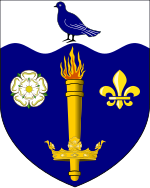Newland Allotments
Community gardening in the United KingdomCulture in Kingston upon HullEnvironmental organisations based in the United KingdomEnvironmentalism in the United KingdomGardening in the United Kingdom ... and 6 more
Kingston upon HullOrganizations established in the 19th centuryParks and open spaces in Kingston upon HullSustainable agricultureUrban agricultureUse British English from January 2024

Newland Allotments is a historic community garden established in the 1800s and located in the suburb Newland in Hull, East Riding of Yorkshire, England. It is one of 21 sites across the city. Sitting within 22 acres of land, and with 270 plots on site, it is the largest allotment site in the city and East Yorkshire. The allotment site is classified as statutory, providing protection under the Allotments Act 1925. As statutory allotments, they cannot be sold or repurposed without the consent of the Secretary of State.
Excerpt from the Wikipedia article Newland Allotments (License: CC BY-SA 3.0, Authors, Images).Newland Allotments
Raglan Street, Hull Avenues
Geographical coordinates (GPS) Address External links Nearby Places Show on map
Geographical coordinates (GPS)
| Latitude | Longitude |
|---|---|
| N 53.76571 ° | E -0.36418 ° |
Address
Raglan Street
Raglan Street
HU5 2JF Hull, Avenues
England, United Kingdom
Open on Google Maps










